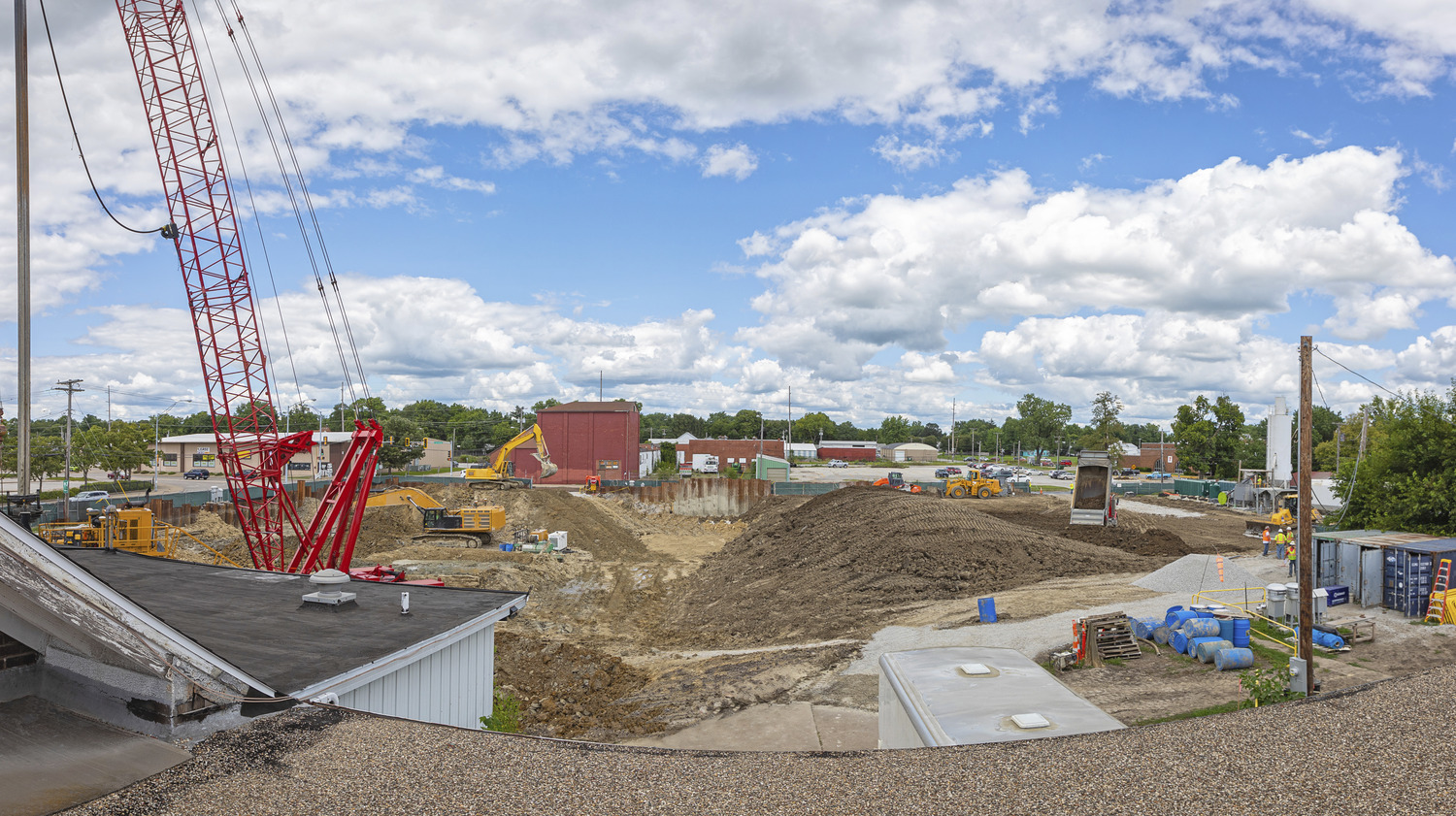Solution
Our team received regulatory approval of the three required reports and plans necessary to begin remediation within two years of authorization. We started the project with site investigation activities in late 2017. Within the first half of 2019, we completed design specifications, drawings and bid evaluations, which led to mobilization and construction activities starting in the fourth quarter of 2019.
Prior to remediation efforts, we needed to conduct a high-resolution site characterization (HRSC) to identify the extent of the impacts on the area. After this, we evaluated several remediation technologies. During the HRSC, our team incorporated three steps to analyze the degree of impacts: the U.S. Environmental Protection Agency (EPA) best practice Environmental Sequence Stratigraphy (ESS) to identify and predict contaminant migration pathways; Tar Green Optical Specific Tool (TarGOST) borings to identify and delineate the impacts of NAPL within the subsurface while minimizing the generation of investigation-derived waste; and electrical conductivity (EC) borings to correlate stratigraphic units with geologist observations of targeted soil samples and laboratory analytical samples. This project also involved conventional investigation approaches, including low-flow groundwater sampling, soil core logging and sampling, and slug test analysis.
After the necessary reports and plans were approved, Burns & McDonnell conducted a remedial alternatives evaluation (RAE) using criteria developed in coordination with the client to evaluate several remediation technologies. We also performed bench-scale treatability tests to verify the proper approach. The team selected a remedy that combined excavation and in-situ stabilization (ISS) to depths of 68 feet below ground surface. Throughout the course of remedial activities, our team implemented excavation support strategically combining both sheet piling and structural ISS cell methodologies so that residents living adjacent to the site could continue to use the alley to access their garages and backyards. ISS activities required significant volumes of both auger and bucket mixing. Remedial activities performed at the site incorporated the temporary removal and reinstallation of a gas regulator station, abatement of 7 tons of asbestos-containing material, demolition of three residential structures up to two stories in height, and removal of two previously unknown underground storage tanks. The steps taken throughout this project minimized the amount of contaminated water and bound contaminants into a subsurface monolith, inhibiting their leachability into groundwater.

